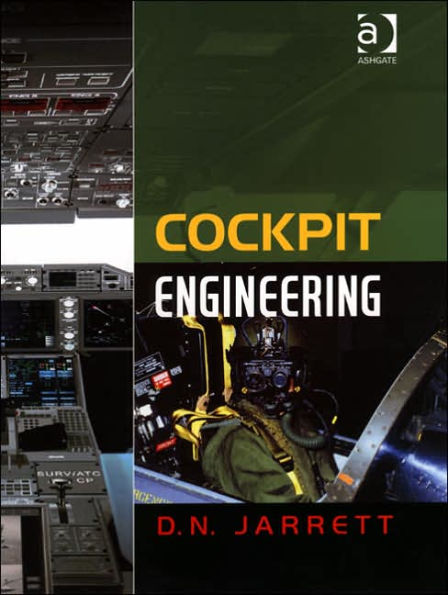Cockpit Engineering / Edition 1
Cockpit Engineering provides an understandable introduction to cockpit systems and a reference to current concepts and research. The emphasis throughout is on the cockpit as a totality, and the book is accordingly comprehensive. The first chapter is an overview of how the modern cockpit has evolved to protect the crew and enable them to do their job. The importance of psychological and physiological factors is made clear in the following two chapters that summarise the expectable abilities of aircrew and the hazards of the airborne environment. The fourth chapter describes the stages employed in the design of a modern crewstation and the complications that have been induced by automated avionic systems. The subsequent chapters review the component systems and the technologies that are utilized. Descriptions of equipment for external vision - primarily the windscreen, canopy and night-vision systems - are followed by pneumatic, inertial and electro-mechanical instruments and the considerations entailed in laying out a suite of displays and arranging night-lighting. Separate chapters cover display technology, head-up displays, helmet-mounted displays, controls (including novel controls that respond directly to speech and the activity of the head, eye and brain), auditory displays, emergency escape, and the complex layers of clothing and headgear. The last chapter gives the author's speculative views on ideas and research that could profoundly alter the form of the crewstation and the role of the crew. Although the focus of the book is on combat aircraft, which present the greatest engineering and ergonomic challenges, Cockpit Engineering is written for professional engineers and scientists involved in aerospace research, manufacture and procurement; and for aircrew, both civil and military - particularly during training. It will also be of great interest to university students specialising in aerospace, mechanical and electronic engineering, and to professional engineers and scientists in the marine, automotive and related industries.
1100914184
Cockpit Engineering / Edition 1
Cockpit Engineering provides an understandable introduction to cockpit systems and a reference to current concepts and research. The emphasis throughout is on the cockpit as a totality, and the book is accordingly comprehensive. The first chapter is an overview of how the modern cockpit has evolved to protect the crew and enable them to do their job. The importance of psychological and physiological factors is made clear in the following two chapters that summarise the expectable abilities of aircrew and the hazards of the airborne environment. The fourth chapter describes the stages employed in the design of a modern crewstation and the complications that have been induced by automated avionic systems. The subsequent chapters review the component systems and the technologies that are utilized. Descriptions of equipment for external vision - primarily the windscreen, canopy and night-vision systems - are followed by pneumatic, inertial and electro-mechanical instruments and the considerations entailed in laying out a suite of displays and arranging night-lighting. Separate chapters cover display technology, head-up displays, helmet-mounted displays, controls (including novel controls that respond directly to speech and the activity of the head, eye and brain), auditory displays, emergency escape, and the complex layers of clothing and headgear. The last chapter gives the author's speculative views on ideas and research that could profoundly alter the form of the crewstation and the role of the crew. Although the focus of the book is on combat aircraft, which present the greatest engineering and ergonomic challenges, Cockpit Engineering is written for professional engineers and scientists involved in aerospace research, manufacture and procurement; and for aircrew, both civil and military - particularly during training. It will also be of great interest to university students specialising in aerospace, mechanical and electronic engineering, and to professional engineers and scientists in the marine, automotive and related industries.
140.0
Out Of Stock
5
1

Cockpit Engineering / Edition 1
424
Cockpit Engineering / Edition 1
424Hardcover(New Edition)
$140.00
Related collections and offers
140.0
Out Of Stock

Product Details
| ISBN-13: | 9780754617518 |
|---|---|
| Publisher: | Taylor & Francis |
| Publication date: | 04/20/2005 |
| Edition description: | New Edition |
| Pages: | 424 |
| Product dimensions: | 6.88(w) x 9.69(h) x (d) |
About the Author
From the B&N Reads Blog
